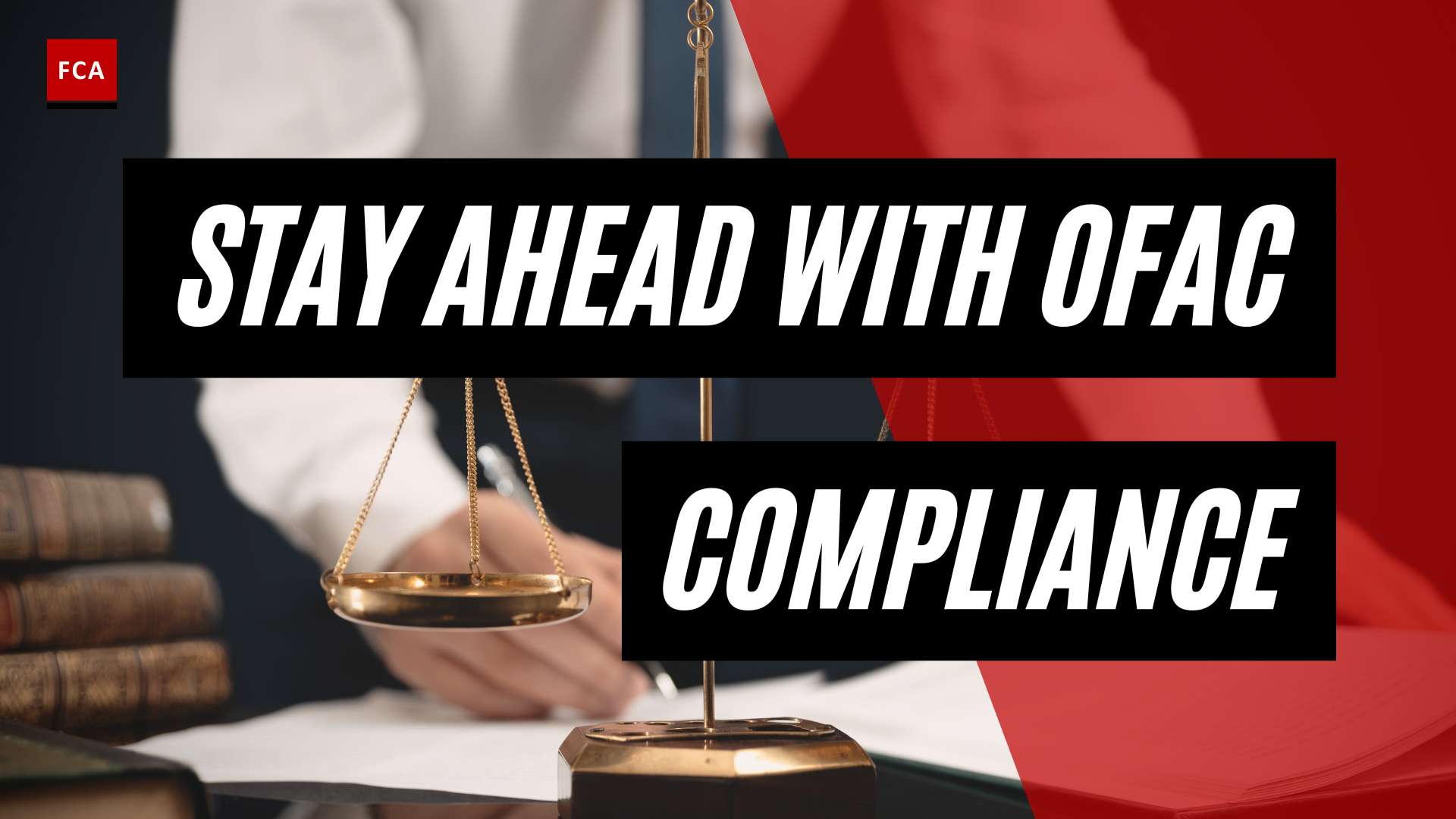Understanding AML Training
To combat the risks associated with money laundering and financial crime, organizations must invest in comprehensive Anti-Money Laundering (AML) training for their employees. AML training plays a pivotal role in equipping employees with the necessary knowledge and skills to identify and prevent illicit activities. By fostering a well-informed and vigilant workforce, organizations can effectively contribute to the integrity of the financial system.
Importance of AML Training
AML training for employees is a critical component of an effective compliance program. It ensures that employees understand the significance of detecting and deterring money laundering activities. By providing employees with the knowledge of AML regulations, red flags, and reporting requirements, organizations empower their workforce to actively participate in the fight against financial crime.
By demonstrating a commitment to AML training, organizations can enhance their compliance efforts and safeguard their reputation. A well-implemented and successful AML program showcases an organization’s dedication to ethical and sustainable business practices, earning the trust of stakeholders and employees alike (Flagright).
Tailoring AML Training Programs
AML training programs should be tailored to the specific risks faced by an organization. Factors such as the nature of the business, customer base, products and services offered, and geographic locations where the organization operates should be considered when designing training programs.
By customizing AML training, organizations can address the unique challenges and vulnerabilities they may encounter. This ensures that employees receive targeted training that aligns with their roles and responsibilities, enabling them to identify and report suspicious activities effectively. Tailored training programs also foster a greater sense of ownership and accountability among employees, further strengthening the organization’s AML compliance efforts.
To design effective AML training programs, organizations should consider the following elements:
- Regulatory Requirements: AML training should encompass the legal and regulatory obligations specific to the industry and jurisdiction in which the organization operates. It should cover key legislative frameworks such as the Bank Secrecy Act (BSA), USA PATRIOT Act, Office of Foreign Assets Control (OFAC) regulations, and Anti-Money Laundering Directives (AMLDs) in the EU.
- Recognizing Red Flags: AML training should educate employees on the common red flags that indicate potential money laundering activities. By providing practical examples and case studies, employees can develop the ability to detect suspicious transactions and behaviors.
- Suspicious Activity Reporting: Employees should understand their responsibilities in reporting suspicious activities to the appropriate authorities. AML training should outline the reporting process and emphasize the importance of timely and accurate reporting.
- Employee Responsibilities: AML training should clearly define the roles and responsibilities of employees in the organization’s overall AML compliance efforts. This includes understanding the organization’s policies and procedures, conducting customer due diligence, and implementing effective transaction monitoring.
By incorporating these key elements into AML training programs, organizations can empower their employees to become the frontline defense against money laundering and financial crime. Ongoing monitoring and evaluation of training programs ensure that employees stay updated with the latest trends and developments in the field of AML.
Key Elements of AML Training
To ensure effective prevention and detection of money laundering and financial crimes, AML training for employees should cover key elements that equip them with the necessary knowledge and skills. These elements include regulatory requirements, recognizing red flags, suspicious activity reporting, and employee responsibilities.
Regulatory Requirements
AML training programs must align with the regulatory requirements imposed by relevant authorities. These requirements vary across jurisdictions, but they generally aim to ensure that employees understand their obligations in combating money laundering and terrorist financing. Training should cover applicable laws, regulations, and industry standards to ensure compliance and mitigate the risk of financial crimes. Organizations should regularly review and update their training programs to adapt to evolving regulatory landscapes.
Recognizing Red Flags
Recognizing red flags is a crucial aspect of AML training. Employees need to be able to identify suspicious activities that may indicate potential money laundering or terrorist financing. Training should provide comprehensive guidance on the common red flags and indicators of illicit financial transactions. Practical examples and case studies can enhance employees’ understanding of how money laundering schemes operate and how to spot suspicious activities in real-life scenarios. By training employees to recognize red flags, organizations can strengthen their ability to identify and prevent financial crimes.
Suspicious Activity Reporting
Reporting suspicious activities is a vital responsibility of employees in AML compliance. Training should educate employees on the importance of promptly reporting suspicions related to money laundering, fraud, or terrorism to the appropriate financial intelligence unit (FIU) or internal compliance departments. Employees should be familiar with the reporting processes, including the necessary documentation and communication channels. By emphasizing the significance of reporting suspicious activities, organizations can contribute to the overall efforts in combatting financial crimes.
Employee Responsibilities
AML training should clearly outline the specific responsibilities and roles of employees in preventing and detecting money laundering and financial crimes. Employees need to understand their obligations in conducting customer due diligence, monitoring transactions, and complying with internal policies and procedures. Training should emphasize the importance of adhering to AML measures and the consequences of non-compliance. By effectively communicating employee responsibilities, organizations can foster a culture of compliance and ensure that every employee plays a proactive role in mitigating the risk of financial crimes.
By incorporating these key elements into AML training programs, organizations can empower their employees with the knowledge and skills necessary to combat money laundering and financial crimes effectively. Regular updates and ongoing monitoring of training effectiveness are essential to stay abreast of new trends and typologies in financial crimes. A comprehensive AML training program not only enhances compliance and reputation but also contributes to safeguarding the integrity of the financial system as a whole.
Designing Effective AML Training Programs
To ensure that employees are equipped with the necessary knowledge and skills to combat money laundering and terrorist financing, designing effective AML training programs is crucial. These programs should incorporate a combination of theoretical concepts, practical examples, case studies, real-life scenarios, as well as ongoing monitoring and evaluation.
Theoretical Concepts and Practical Examples
AML training programs should strike a balance between theoretical knowledge and practical application. Employees need to understand the underlying concepts and principles of anti-money laundering regulations and compliance requirements. This includes grasping the basics of money laundering, terrorist financing, and the global AML framework. By providing employees with a solid foundation of theoretical knowledge, they will be better equipped to recognize and respond to potential risks and red flags.
However, theoretical concepts alone may not be sufficient. Practical examples play a crucial role in helping employees understand how money laundering schemes work in real-life scenarios. By presenting actual cases and illustrating the techniques used by criminals, employees can gain practical insights into identifying suspicious activities and understanding the importance of their role in preventing financial crimes. Incorporating practical examples also helps to foster engagement and make the training more relatable for employees.
Case Studies and Real-Life Scenarios
In addition to theoretical concepts, case studies and real-life scenarios offer valuable learning opportunities for employees. By analyzing historical cases of money laundering or terrorist financing, employees can develop a deeper understanding of the different methods employed by criminals and the consequences of their actions. Case studies can also highlight the importance of compliance and the impact it has on financial institutions, society, and the global economy.
Real-life scenarios provide employees with hands-on experience in identifying and responding to suspicious activities. Through role-playing exercises or interactive simulations, employees can apply their knowledge and skills to practical situations. These scenarios can be customized to reflect the specific risks and challenges faced by the organization, making the training more relevant and impactful.
Ongoing Monitoring and Evaluation
AML training programs should not be considered a one-time event, but rather an ongoing process. It is essential to establish mechanisms for monitoring and evaluating the effectiveness of the training programs. This can be done through regular assessments, quizzes, or surveys to gauge employees’ understanding and retention of the training material. Feedback from employees can also help identify areas for improvement or additional training needs.
Monitoring should extend beyond the initial training period to ensure that employees receive updated information on emerging trends, regulations, and typologies in money laundering and terrorist financing. Continuous education and awareness are crucial to keeping employees vigilant and proactive in detecting and reporting suspicious activities. Regular updates can be achieved through newsletters, webinars, or internal communication channels.
By designing AML training programs that encompass theoretical concepts, practical examples, case studies, real-life scenarios, and ongoing monitoring and evaluation, organizations can empower their employees with the knowledge and skills necessary to effectively combat money laundering and terrorist financing. This comprehensive approach enhances compliance, reduces the risk of financial losses, and protects the integrity of the financial system as a whole.
Benefits of AML Training for Employees
Implementing effective AML (Anti-Money Laundering) training programs for employees brings numerous benefits to both individuals and organizations. A well-trained workforce plays a crucial role in maintaining compliance, protecting the reputation of the organization, preventing financial losses, and upholding the integrity of the financial system.
Enhancing Compliance and Reputation
A well-implemented and successful AML program demonstrates an organization’s commitment to conducting business ethically and sustainably. AML training equips employees with the knowledge and skills necessary to identify and mitigate the risks associated with financial crime. By understanding regulatory requirements, recognizing red flags, and being familiar with suspicious activity reporting, employees become valuable assets in the fight against money laundering and other financial crimes. Regular training sessions, such as AML training courses, ensure that employees stay up to date with evolving regulations and changes in money laundering tactics. This commitment to ongoing education and compliance enhances the overall compliance posture of the organization, establishes trust with customers and regulators, and safeguards its reputation (Flagright).
Preventing Financial Losses
Effective AML training for employees helps prevent financial losses by reducing the risk of money laundering, fraud, and other illicit activities. By understanding the indicators of suspicious transactions and being aware of their reporting obligations, employees can identify and report potential risks promptly. This proactive approach allows organizations to take appropriate action, prevent financial losses, and protect their assets. Furthermore, AML training equips employees with the knowledge of customer due diligence, transaction monitoring, and other risk mitigation techniques. This enables them to effectively identify and address potential vulnerabilities within the financial system, safeguarding the organization’s financial stability (Financial Crime Academy).
Protecting the Integrity of the Financial System
The integrity of the financial system relies on the collective efforts of individuals within organizations to combat money laundering and other financial crimes. AML training plays a crucial role in building a culture of compliance within the organization. By instilling a strong ethical framework and a commitment to regulatory compliance, organizations contribute to a more secure financial system overall. A well-trained workforce helps in reducing the vulnerabilities that criminals may exploit, protects the integrity of financial transactions, and promotes trust among market participants. AML training programs, whether conducted in-person or through AML training online platforms, ensure that employees understand the risks associated with financial crime and are equipped to fulfill their roles in maintaining the integrity of the financial system (EIMF).
Investing in AML training for employees is not only a legal and regulatory requirement but also a strategic decision that yields significant benefits. By enhancing compliance, preventing financial losses, and protecting the integrity of the financial system, organizations can build a strong foundation for sustainable growth and ensure a safer, more transparent financial environment for all stakeholders involved.
Consequences of Inadequate AML Training
Insufficient Anti-Money Laundering (AML) training for employees can have significant consequences for financial institutions and organizations. It is crucial to understand the potential risks and ramifications to emphasize the importance of comprehensive AML training programs. Two key consequences of inadequate AML training are financial penalties and legal implications, as well as reputational damage and loss of trust.
Financial Penalties and Legal Implications
Financial organizations that fail to provide adequate AML training to their employees can face severe financial penalties and legal consequences. Regulatory bodies, such as the Bank Secrecy Act (BSA) and the USA PATRIOT Act, impose strict compliance requirements to combat money laundering and safeguard the financial system. Violating these regulations can result in significant fines and legal actions.
For instance, violations of the BSA can lead to fines of up to $500,000 and imprisonment for up to 10 years, while non-compliance with the USA PATRIOT Act can result in fines of up to $1 million or double the value of the transaction. Additionally, organizations may face sanctions that prohibit them from conducting business, further impacting their operations and reputation.
Reputational Damage and Loss of Trust
The consequences of inadequate AML training extend beyond financial penalties and legal implications. Reputational damage and loss of trust can have long-lasting effects on an organization’s credibility and customer relationships.
When financial institutions fail to effectively prevent money laundering and other financial crimes, their reputation can be severely tarnished. Negative publicity and media coverage highlighting compliance failures can erode customer trust and confidence. Customers may question the institution’s ability to protect their financial interests and may choose to take their business elsewhere.
Rebuilding a damaged reputation and regaining trust can be a challenging and time-consuming process. It requires a concerted effort to demonstrate a commitment to regulatory compliance, implement robust AML measures, and provide ongoing training to employees.
To avoid these consequences, organizations must prioritize AML training for employees at all levels. Investing in comprehensive AML training programs not only reduces the risk of financial crimes but also creates a culture of compliance within the organization. By promoting a strong ethical framework and a commitment to regulatory compliance, organizations can safeguard their operations, build trust with customers and regulators, and contribute to a more secure financial system overall.
In the next section, we will explore the compliance framework for AML training, including the Bank Secrecy Act (BSA), USA PATRIOT Act requirements, Office of Foreign Assets Control (OFAC) regulations, and Anti-Money Laundering Directives (AMLDs) in the EU.
Compliance Framework for AML Training
To ensure effective AML training, it’s essential to understand the compliance framework that governs anti-money laundering efforts. Several regulatory requirements and acts play a crucial role in shaping AML training programs. Let’s explore some of the key components of this compliance framework.
Bank Secrecy Act (BSA) Compliance
The Bank Secrecy Act (BSA) of 1970 is one of the most significant U.S. laws in the fight against money laundering. It requires financial institutions to establish and maintain effective AML programs. The BSA imposes obligations on banks and other financial institutions to implement policies, procedures, and internal controls to detect and prevent money laundering activities. Violations of the BSA can result in significant penalties, including fines of up to $500,000 and imprisonment for up to 10 years (Unit21).
USA PATRIOT Act Requirements
The USA PATRIOT Act, enacted in response to the 9/11 attacks, requires banks and financial institutions in the United States to understand their AML compliance obligations. The act enhances the tools available to law enforcement agencies to detect and deter money laundering and terrorist financing activities. Financial institutions must establish robust AML programs, including customer due diligence, ongoing monitoring, and reporting suspicious activities. Violations of the USA PATRIOT Act can lead to severe penalties, including fines of up to $1 million or double the value of the transaction (Unit21).
Office of Foreign Assets Control (OFAC) Regulations
The Office of Foreign Assets Control (OFAC) is responsible for administering and enforcing economic and trade sanctions based on U.S. foreign policy and national security goals. Financial institutions must comply with OFAC regulations to prevent transactions with individuals, entities, or countries under sanctions. Violations of AML sanctions can result in significant penalties, including fines of up to $20 million and imprisonment of up to 30 years.
Anti-Money Laundering Directives (AMLDs) in the EU
The European Union (EU) has adopted a series of Anti-Money Laundering Directives (AMLDs) that establish regulatory requirements for EU member states. These directives aim to harmonize AML efforts across the EU and ensure consistent standards for combating money laundering and terrorist financing. The latest directive, 6AMLD, has increased penalties for money laundering offenses, introducing minimum prison sentences and economic sanctions (Unit21).
Compliance with these regulatory frameworks is crucial for financial institutions and other businesses to prevent money laundering activities effectively. AML training programs should incorporate the requirements and obligations outlined in these frameworks. By understanding and adhering to these regulations, organizations can mitigate the risk of non-compliance, financial penalties, and reputational damage.
AML and CTF Training for Employees
To effectively combat money laundering and terrorist financing, it is crucial for employees to receive comprehensive AML and CTF (Counter-Terrorist Financing) training. This training equips employees with the necessary knowledge and skills to understand the associated risks and fulfill their reporting obligations.
Understanding Risks and Reporting Obligations
AML and CTF training provides employees with a deep understanding of the risks associated with financial crimes. They learn to recognize suspicious activities, such as transactions involving large sums of money with no clear legitimate purpose or unusual patterns of behavior. By being able to identify these red flags, employees play a critical role in detecting potential money laundering and terrorist financing activities.
Furthermore, AML and CTF training educates employees on their reporting obligations. They learn how to properly report suspicious activities to the appropriate authorities or internal compliance teams, ensuring that potential threats are promptly addressed. This promotes a proactive approach to combating financial crimes and contributes to the overall integrity of the financial system.
Customer Due Diligence and Transaction Monitoring
AML and CTF training emphasizes the importance of customer due diligence (CDD) and transaction monitoring. Employees learn how to conduct thorough CDD procedures, which involve verifying the identity of customers, assessing their risk profiles, and monitoring their transactions. By understanding these procedures, employees can identify high-risk customers and transactions that may require further scrutiny.
Through training, employees also gain insights into the various tools and techniques used for transaction monitoring. They learn how to detect potential money laundering patterns, such as structuring transactions to avoid detection, layering funds through multiple accounts, or engaging in complex trade-based money laundering schemes. This knowledge enables employees to take appropriate action and report suspicious transactions as necessary.
Staying Vigilant Against Evolving Tactics
Money laundering and terrorist financing tactics constantly evolve, making it essential for employees to stay vigilant and up-to-date. AML and CTF training programs provide employees with ongoing education and awareness of emerging trends and new techniques employed by criminals.
The training may include case studies and real-life scenarios that highlight recent money laundering and terrorist financing schemes. By analyzing these examples, employees can develop a deeper understanding of the evolving tactics and apply that knowledge to their day-to-day responsibilities.
By equipping employees with the knowledge and skills to understand risks, fulfill reporting obligations, conduct effective CDD, monitor transactions, and stay informed about emerging trends, organizations can strengthen their AML and CTF defenses. Investing in comprehensive AML and CTF training not only ensures regulatory compliance but also promotes a culture of compliance within the organization, bolstering its reputation and contributing to a more secure financial system overall.
AML Training Best Practices
To ensure the effectiveness of Anti-Money Laundering (AML) training programs, organizations should adhere to best practices that promote knowledge, awareness, and a culture of compliance throughout the workforce.
Tailoring Training to Roles and Responsibilities
AML training programs should be tailored to the specific roles and responsibilities of employees within an organization to ensure relevance and effectiveness in combating financial crimes (AML UAE). A comprehensive AML training program should cover a wide range of topics, including customer due diligence, detecting suspicious transactions, sanctions screening, risk assessment, and reporting obligations. By tailoring the training to the specific roles and responsibilities of employees, organizations can ensure that they are equipped with the knowledge and skills needed to fulfill their AML responsibilities effectively. This targeted approach enhances the practical application of AML principles and enables employees to perform their duties with confidence and competence.
Regular Updates and Awareness of New Trends
Investing in AML training for employees is an ongoing process. Money laundering techniques evolve, and criminals become more sophisticated over time. Therefore, regular and up-to-date training is essential to keep employees informed about the latest trends and typologies in money laundering and terrorism financing (Financial Crime Academy). By providing continuous education and awareness, organizations ensure that their employees stay vigilant and effectively combat financial crimes. This proactive approach helps employees recognize emerging risks and adapt their strategies accordingly.
Creating a Culture of Compliance
Beyond providing training, organizations should strive to create a culture of compliance. A well-implemented AML training program ensures that employees understand the risks associated with financial crime, recognize suspicious activities, and follow necessary procedures for reporting such activities. However, to truly embed a commitment to regulatory compliance, organizations must foster a culture that values ethics, integrity, and accountability.
By promoting a strong ethical framework and a commitment to regulatory compliance, organizations can safeguard their operations, build trust with customers and regulators, and contribute to a more secure financial system overall (EIMF). This culture of compliance should be reflected in leadership behaviors, reinforced through regular communication, and supported by robust internal controls and monitoring mechanisms. When employees see that compliance is a priority throughout the organization, they are more likely to embrace their AML responsibilities and actively contribute to the prevention of financial crimes.
By implementing these best practices, organizations can maximize the effectiveness of their AML training programs. Tailoring training to roles and responsibilities ensures that employees receive targeted and relevant knowledge. Regular updates and awareness of new trends keep employees informed about emerging risks. Creating a culture of compliance fosters a proactive approach to AML and empowers employees to play an active role in safeguarding the financial system. Through these efforts, organizations can enhance their compliance efforts, prevent financial losses, and protect the integrity of their operations.








